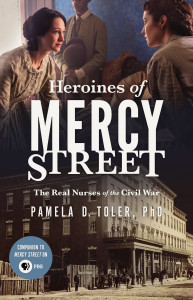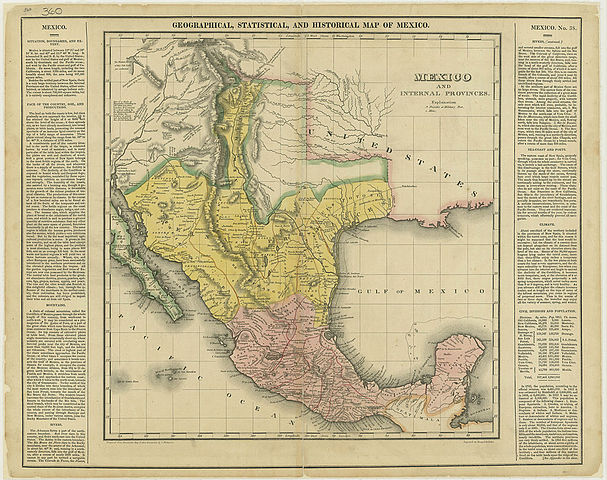By Pamela Toler (Regular Contributor)
Concerns that immigrants flooding across the border threaten the nation’s basic institutions. Construction of armed posts to defend the border. Passage of new, more restrictive immigration laws. Sound familiar? Welcome to Mexico in 1830.
The story began when Mexico won independence from Spain in 1821. At first the newly independent country welcomed settlers from the United States. The government signed contracts with immigration brokers, called empresarios, who agreed to settle a set number of immigrants on a set piece of property in a set amount of time. In exchange for the right to buy land, settlers agreed to obey Mexican law, become Mexican citizens, and convert to Catholicism. At the same time, the US Congress passed a new land act that made emigration to Mexico even more appealing. Public land in the US cost $1.25/acre*, for a minimum of eighty acres and could no longer be bought on credit. Public land in Mexico cost 12 1/2¢/acre and credit terms were generous. Not a hard choice for anyone who was cash-poor and land hungry.
Some empresarios brought in groups of settlers from France or Germany. More, including Stephen Austin,** brought in settlers from the southern United States. Most new colonists settled in new communities east of modern San Antonio. By the mid-1830s, Anglo settlers outnumbered native Tejanos by as many as 10 to 1 in some parts of Texas. These settlers brought the culture of the American South with them, including slaves and slavery.*** In addition, many Anglo settlers traded (illegally) with Louisiana rather than with Mexico.
Concerned about growing American economic and cultural influence in the region, the Mexican government passed a law banning immigration into Texas from the United States on April 6, 1830. They also assessed heavy customs duties on all US goods, prohibited the importation of slaves, built new forts in the border region and opened customs houses to patrol the border for illegal trade.
The law didn’t have the intended affect. Instead of re-gaining control over Texas, Anglo colonists and the Mexican government were in constant conflict. The law was repealed in 1833, too late to staunch the wound. The first shots in what would become the Texas War of Independence were fired on October 2, 1835.
*$31.44 in today’s currency. Still a bargain.
** Hence Austin, Texas. (I don’t know about you, but I’m always curious as to how a town got its name.)
***Outlawed in Mexico is 1829–so much for obeying the laws.

 Pamela D. Toler is a freelance writer with a PhD in history and a large bump of curiosity. She is the author of Heroines of Mercy Street: The Real Nurses of the Civil War and is currently working on a global history of women warriors, with the imaginative working title of Women Warriors.
Pamela D. Toler is a freelance writer with a PhD in history and a large bump of curiosity. She is the author of Heroines of Mercy Street: The Real Nurses of the Civil War and is currently working on a global history of women warriors, with the imaginative working title of Women Warriors.
Find Pamela on Twitter at @pdtoler
Read more of her writing on her personal blog

